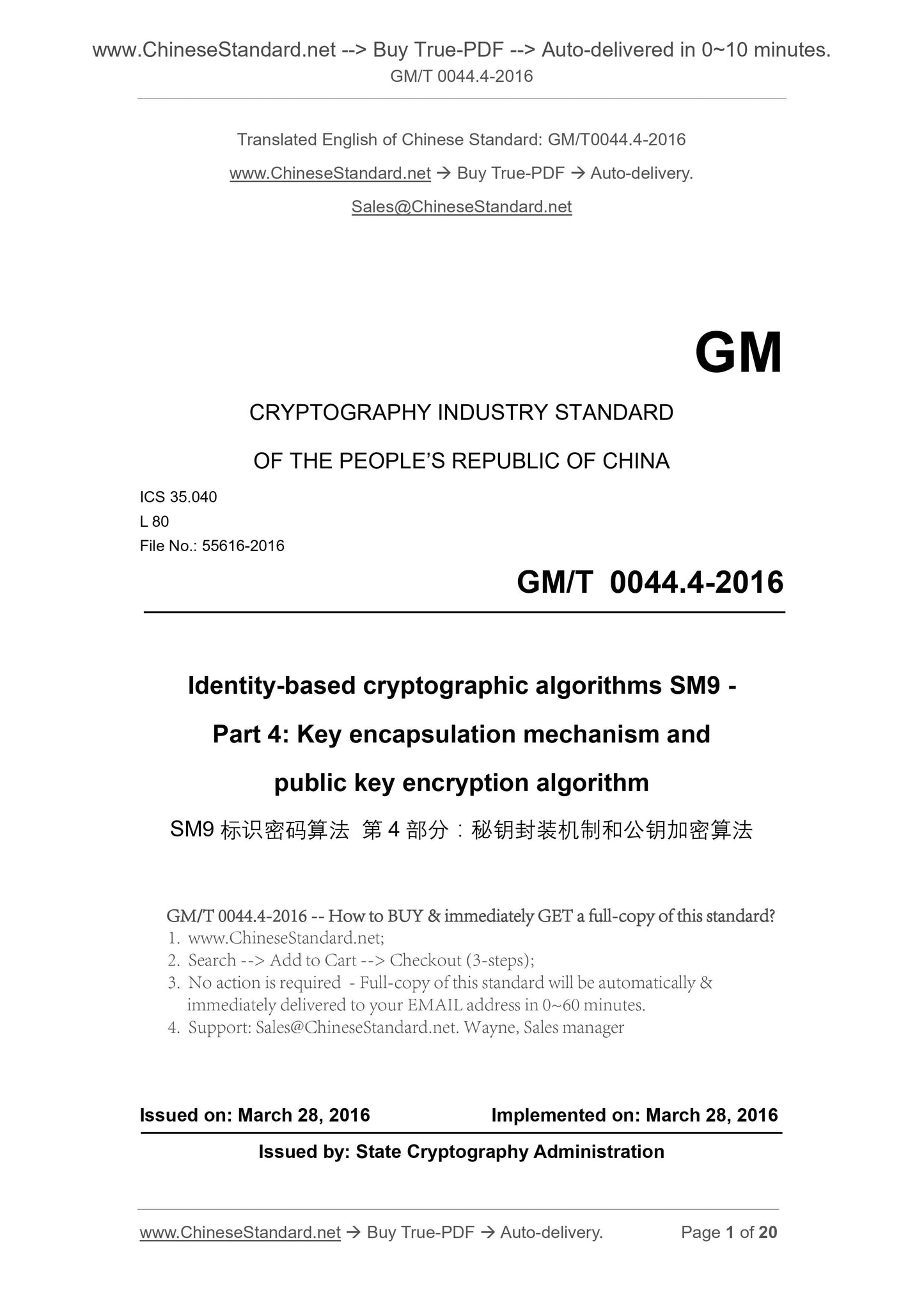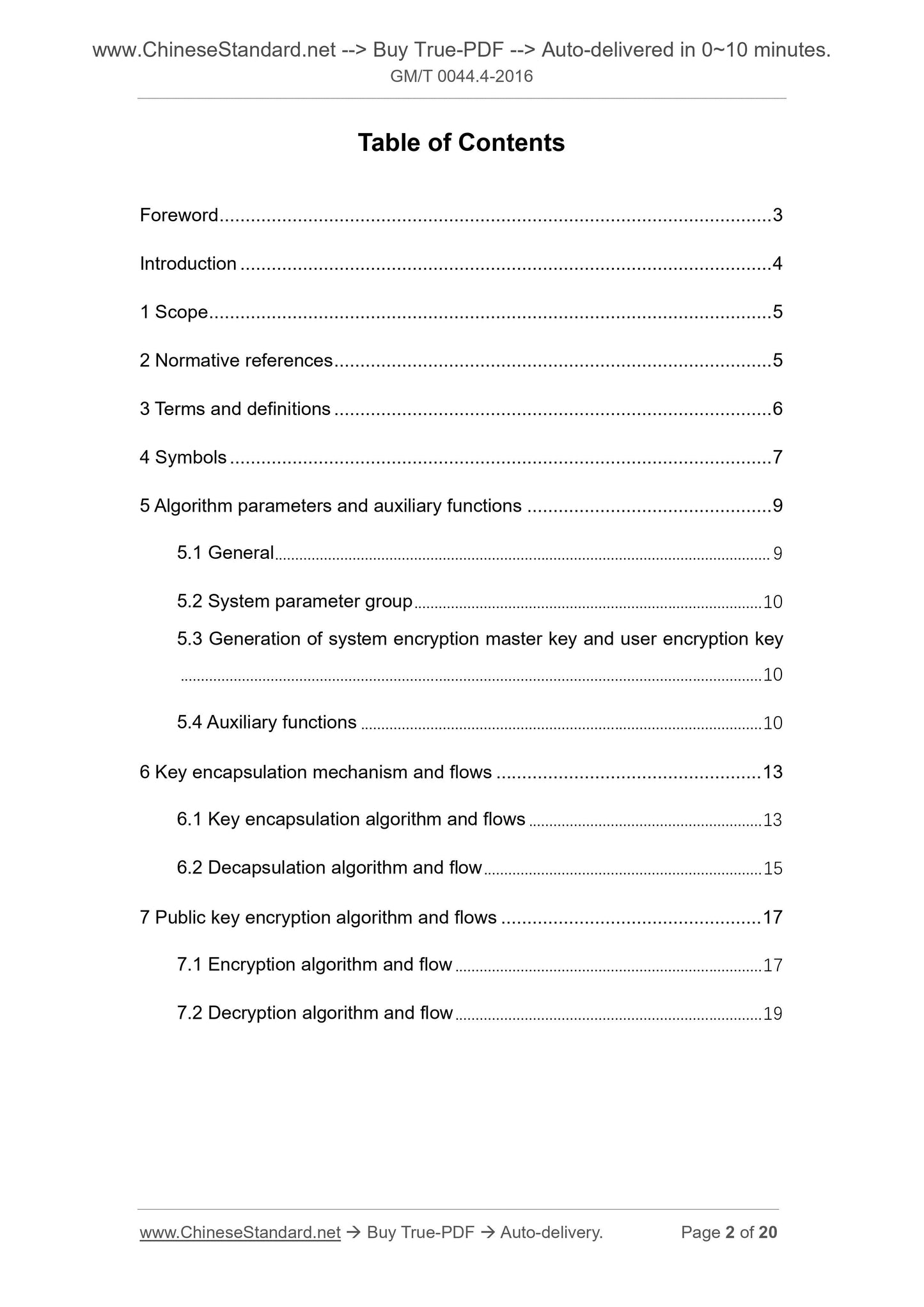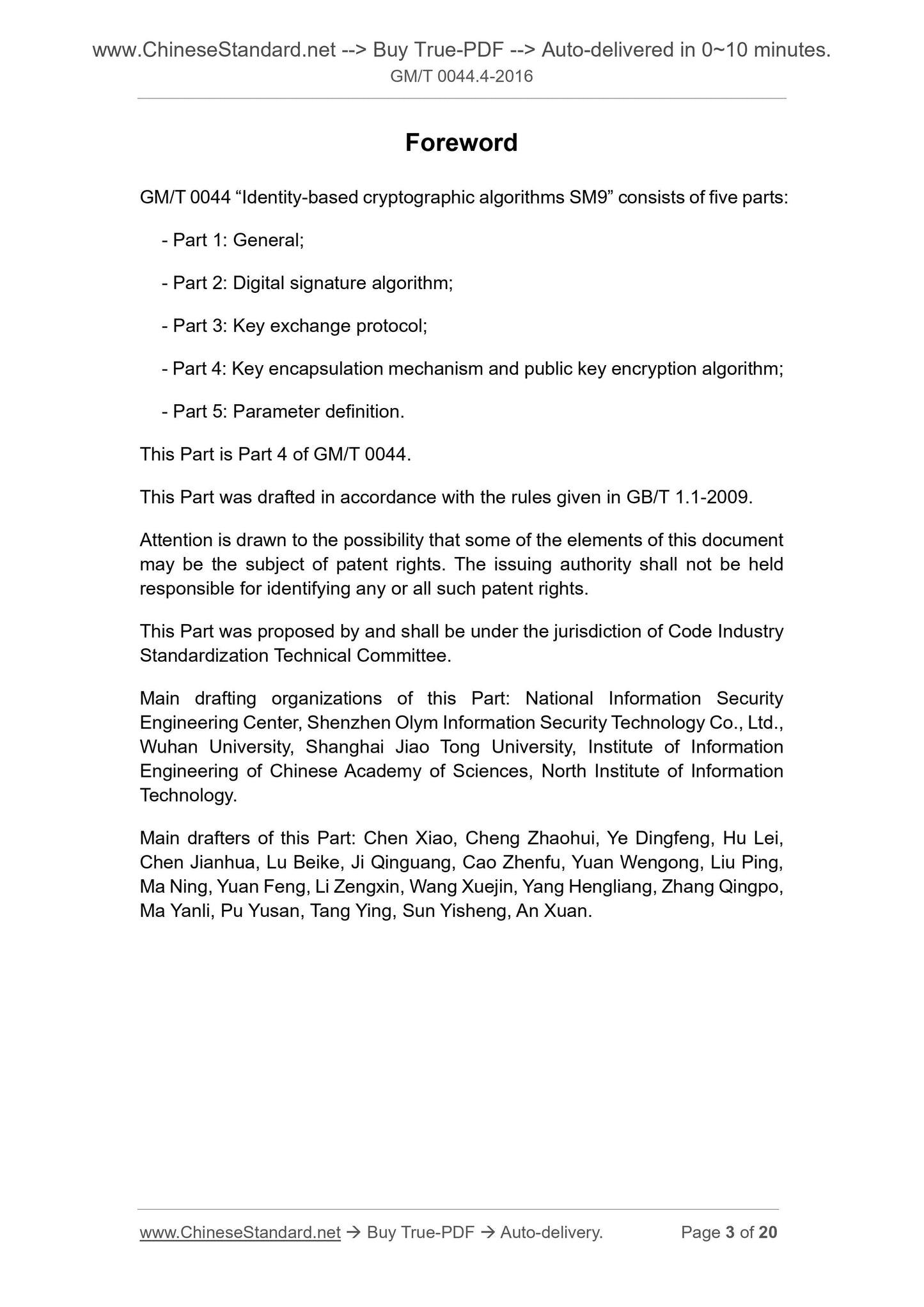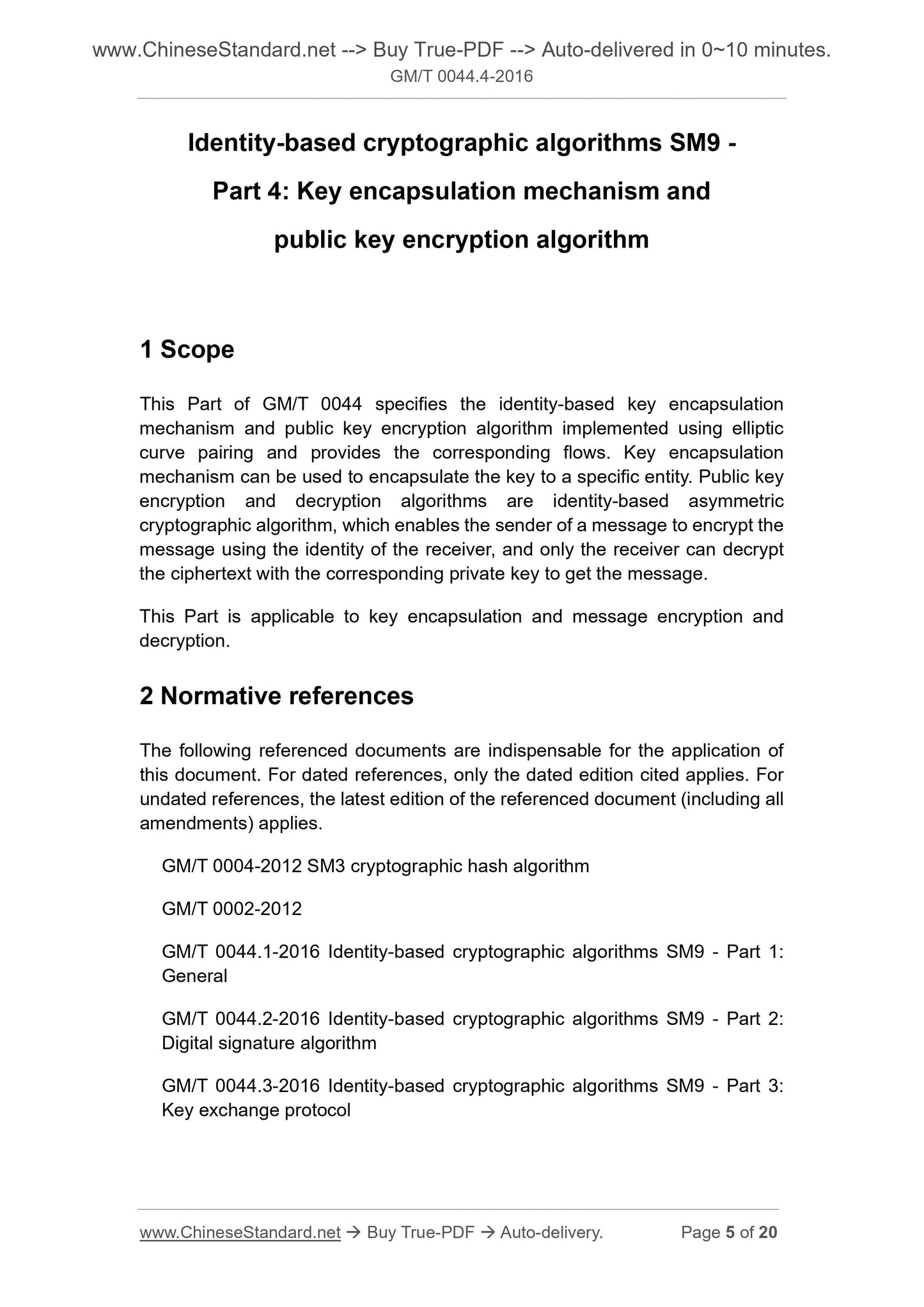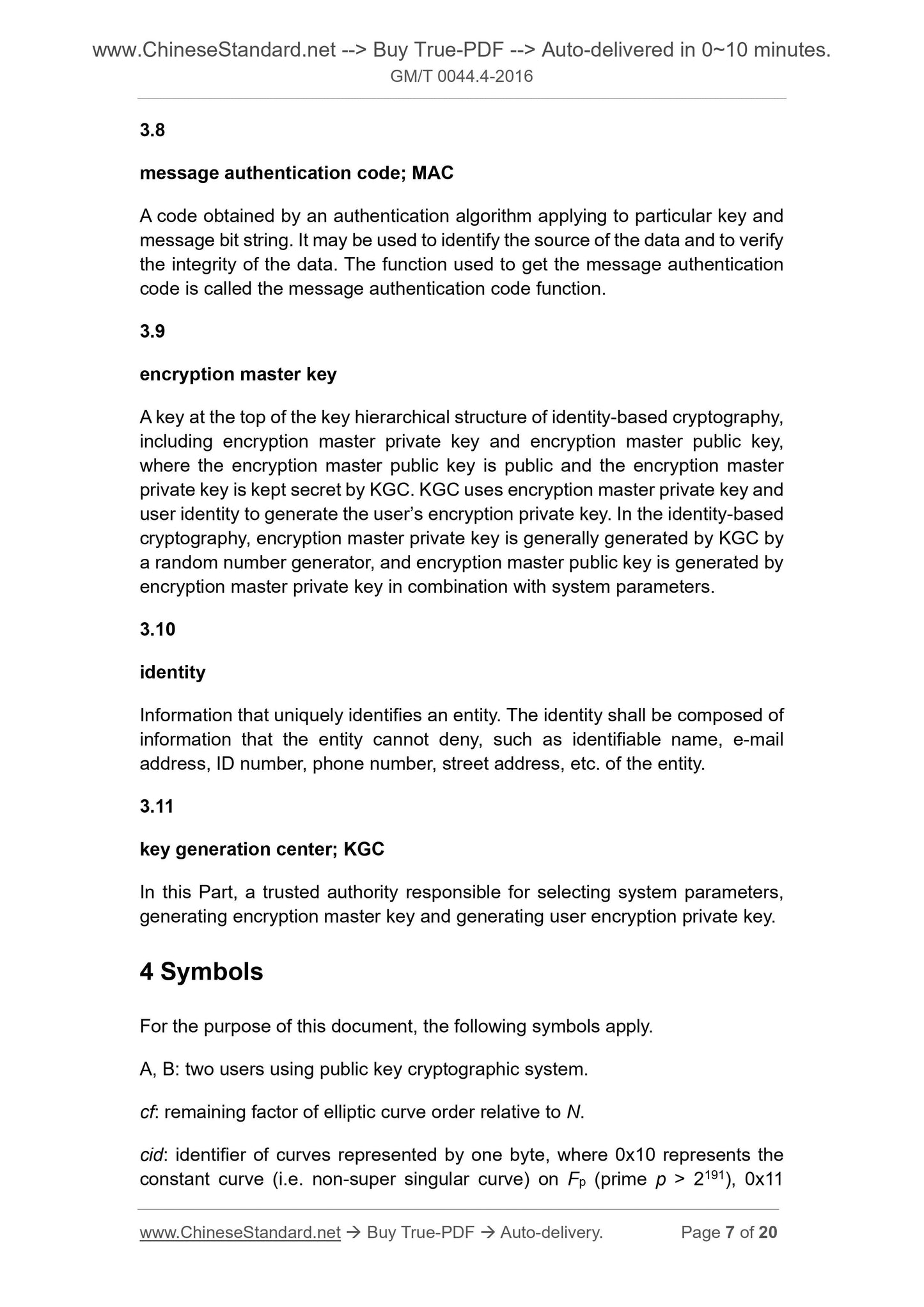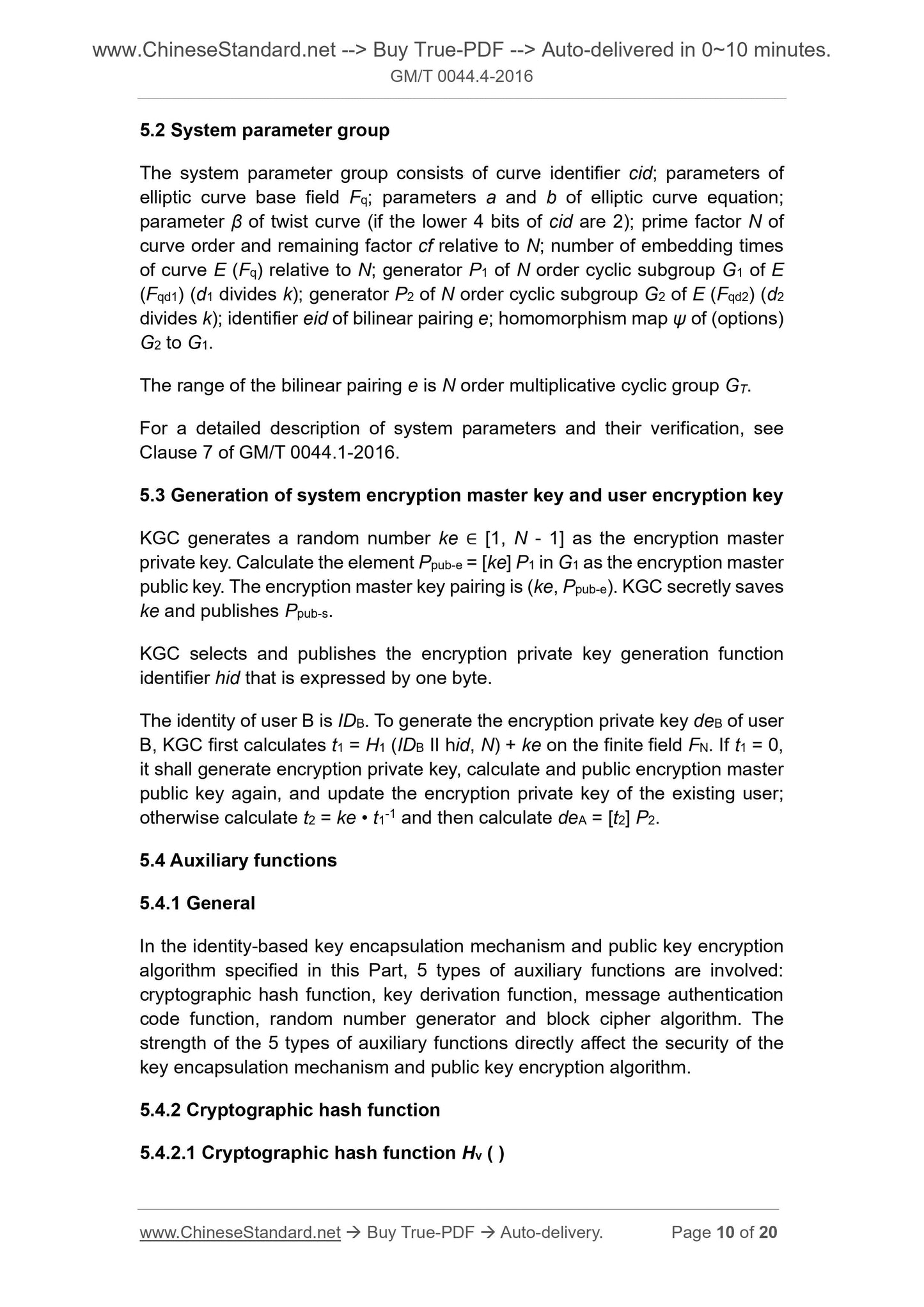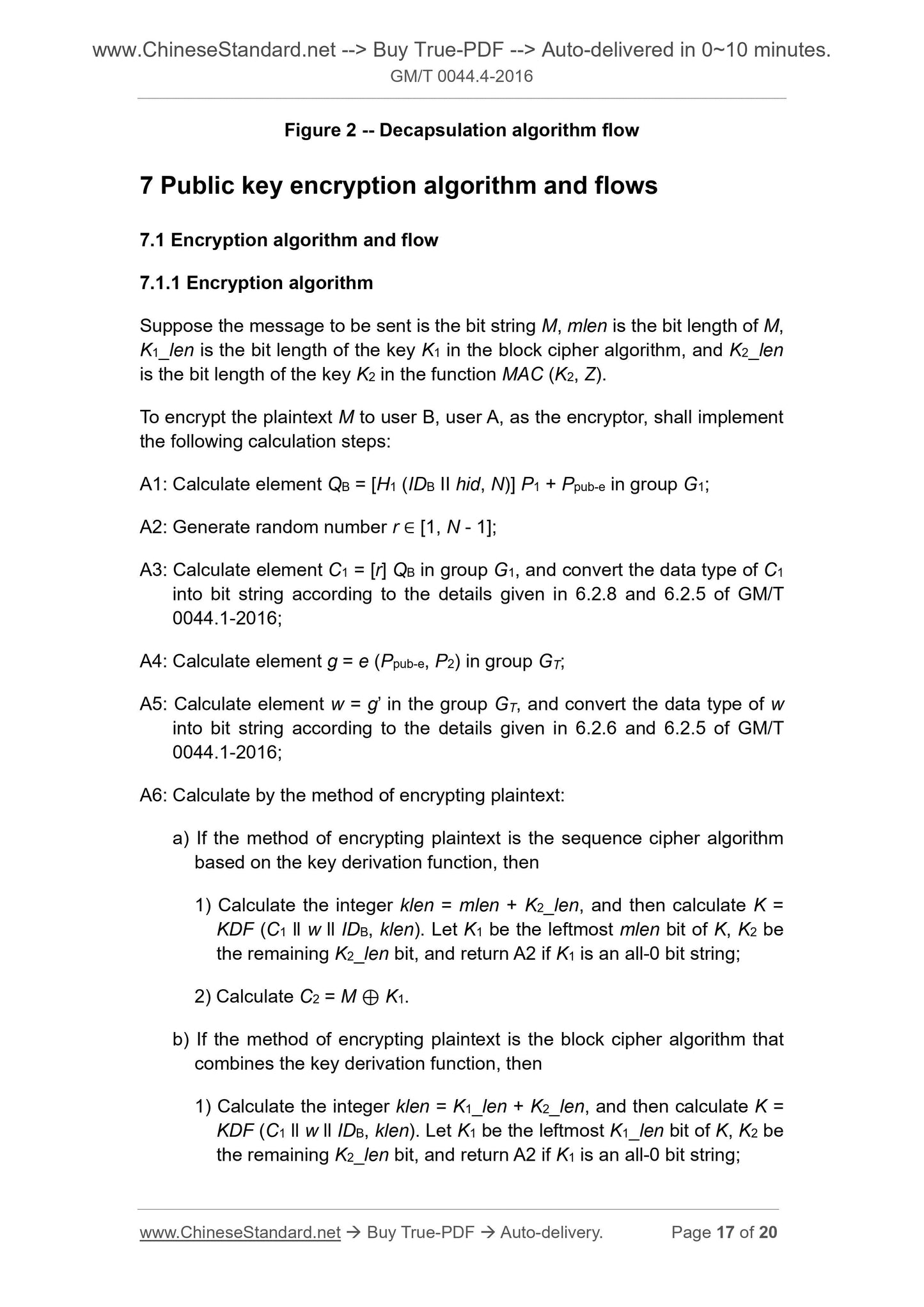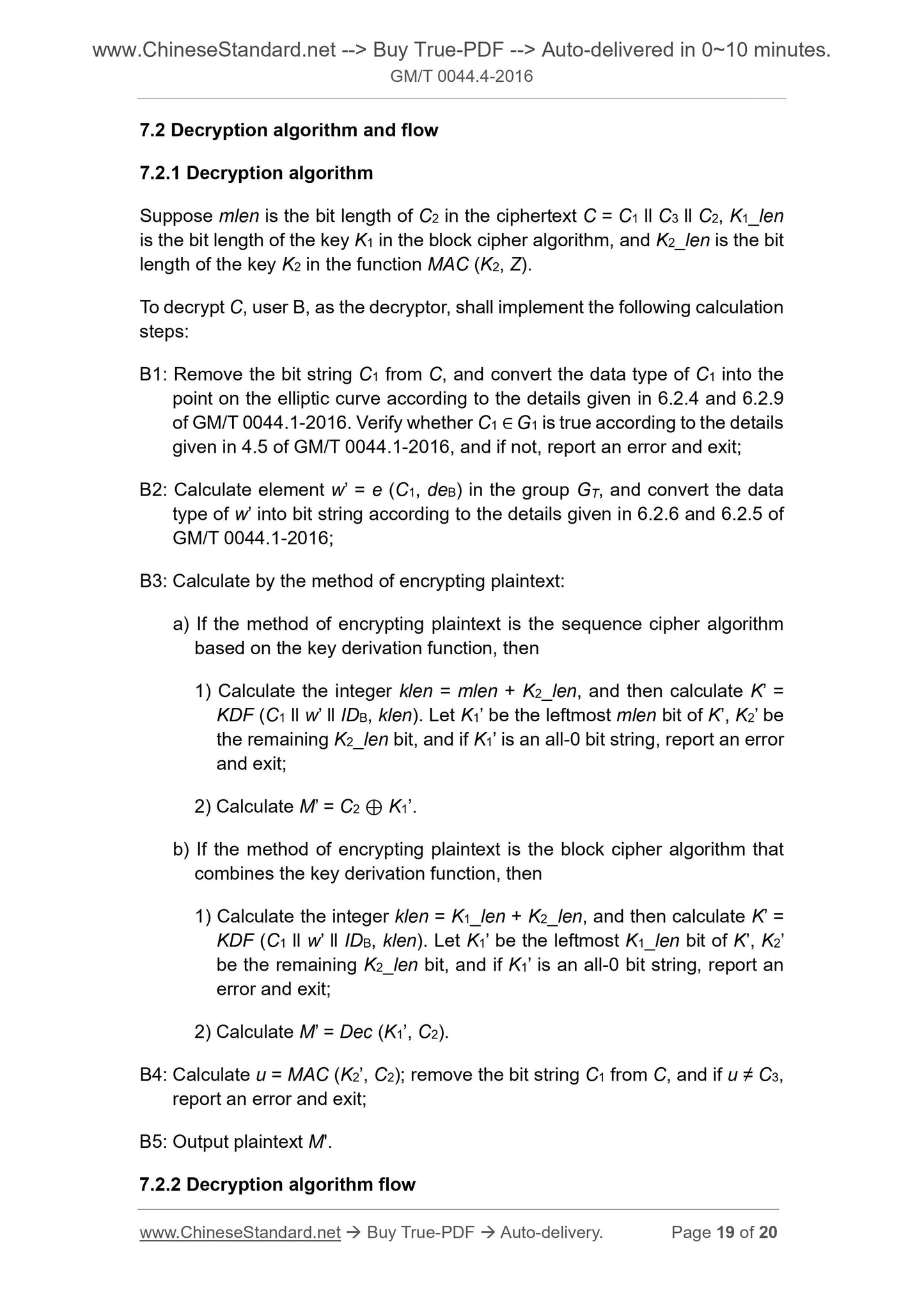1
/
of
8
www.ChineseStandard.us -- Field Test Asia Pte. Ltd.
GM/T 0044.4-2016 English PDF (GM/T0044.4-2016)
GM/T 0044.4-2016 English PDF (GM/T0044.4-2016)
Regular price
$150.00
Regular price
Sale price
$150.00
Unit price
/
per
Shipping calculated at checkout.
Couldn't load pickup availability
GM/T 0044.4-2016: Identity-based cryptographic algorithms SM9 - Part 4: Key encapsulation mechanism and public key encryption algorithm
Delivery: 9 seconds. Download (and Email) true-PDF + Invoice.Get Quotation: Click GM/T 0044.4-2016 (Self-service in 1-minute)
Newer / historical versions: GM/T 0044.4-2016
Preview True-PDF
Scope
This Part of GM/T 0044 specifies the identity-based key encapsulationmechanism and public key encryption algorithm implemented using elliptic
curve pairing and provides the corresponding flows. Key encapsulation
mechanism can be used to encapsulate the key to a specific entity. Public key
encryption and decryption algorithms are identity-based asymmetric
cryptographic algorithm, which enables the sender of a message to encrypt the
message using the identity of the receiver, and only the receiver can decrypt
the ciphertext with the corresponding private key to get the message.
This Part is applicable to key encapsulation and message encryption and
decryption.
Basic Data
| Standard ID | GM/T 0044.4-2016 (GM/T0044.4-2016) |
| Description (Translated English) | Identity-based cryptographic algorithms SM9 - Part 4: Key encapsulation mechanism and public key encryption algorithm |
| Sector / Industry | Chinese Industry Standard (Recommended) |
| Classification of Chinese Standard | L80 |
| Word Count Estimation | 15,198 |
| Date of Issue | 2016-03-28 |
| Date of Implementation | 2016-03-28 |
| Regulation (derived from) | Industry Standard Record Announcement 2016 No.10 (No.202) |
| Issuing agency(ies) | State Administration of Cryptography |
Share
